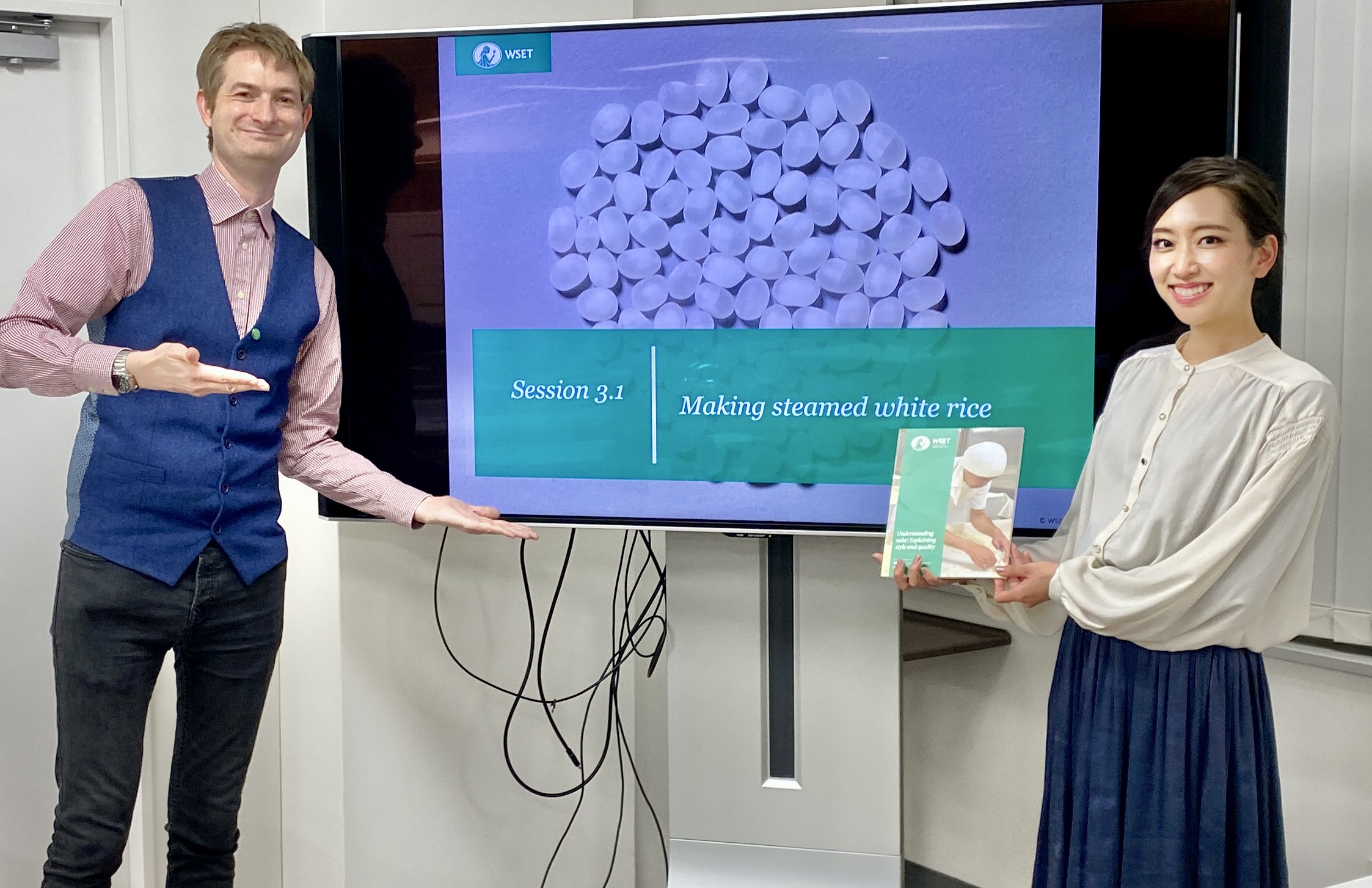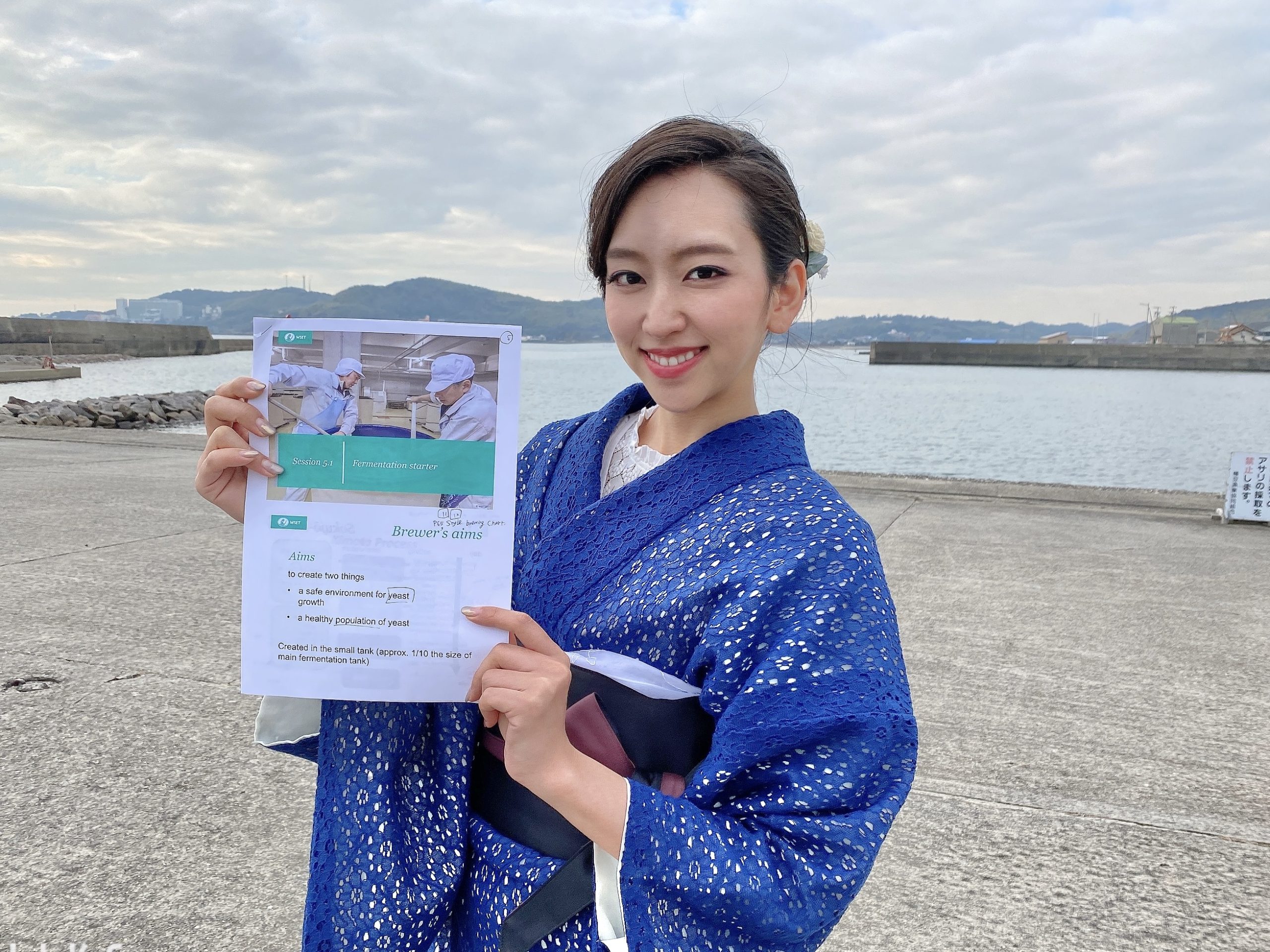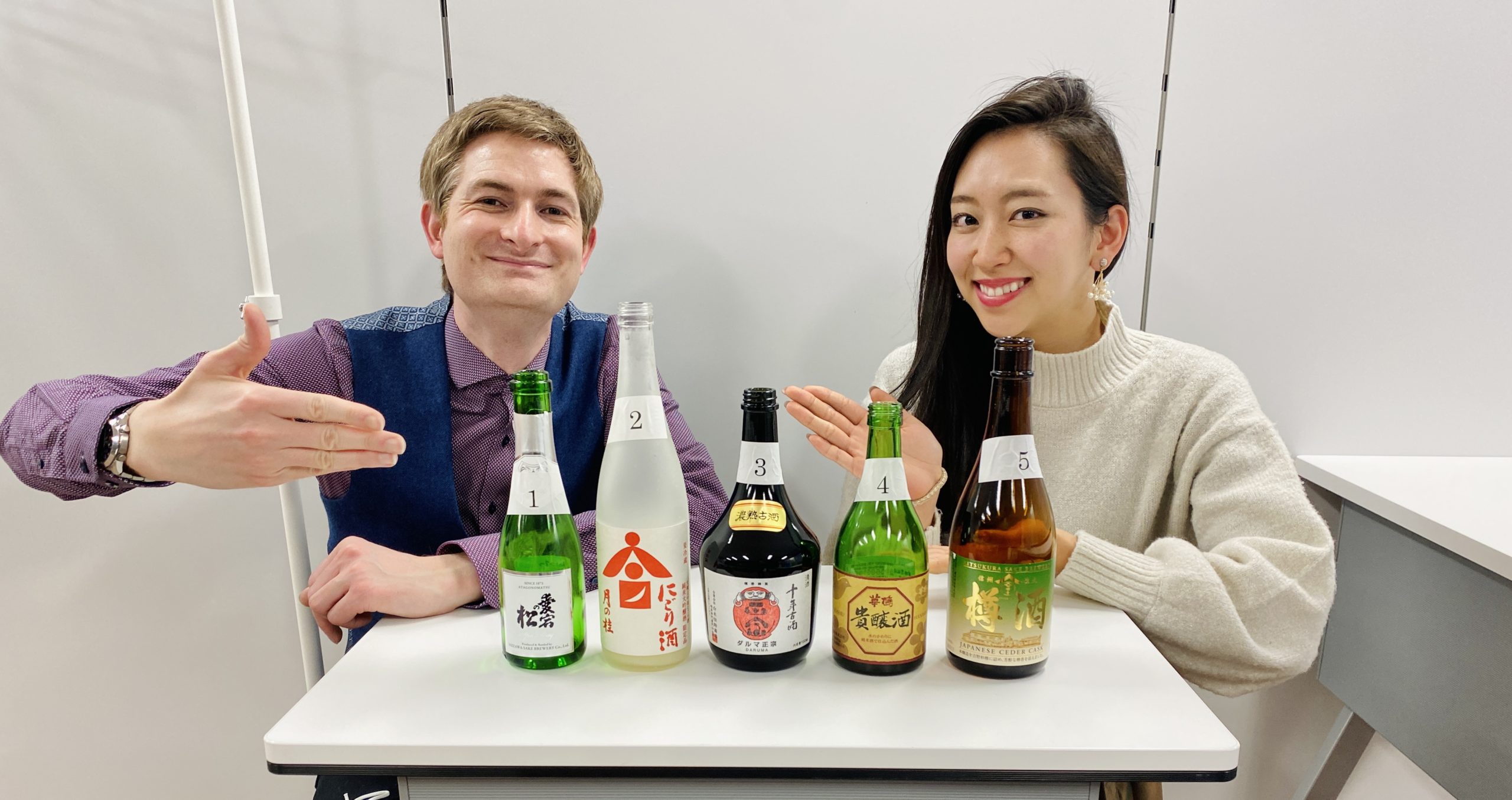Hello, everyone.
I am Miyu Matsuzaki, 2021 Miss SAKE.
I have been working on a blog series: A Guide to Japanese Sake: Miss SAKE. You can see other learning materials on sake from the link that follows: https://www.misssake.org/a-guide-to-japanese-sake-miss-sake/
Sake Brewing Process 3
In this article and the next two articles, I will explain how sake is brewed, dividing the process into pre-brewing, brewing, and post-brewing. This blog is dedicated to Post-Brewing: Finishing.
【Post-Brewing】: Finishing
- Pressing
Once the sake is done, the newly created alcohol needs to be separated from the unfermented rice solids left in the mash. There are several methods for pressing sake, but the most common way is to use an automatic pressing machine known as a Yabuta. The method affects the flavor of sake as well. After pressing, the frames of the machine can be opened and the sake kasu (sake lees) is peeled out. The raw sake at this stage is at full strength (usually around 18% alcohol at this point), has a lemon-ish color, and is unpasteurized.
- Filtering and fining
After pressing, any unprocessed matter is removed by filtration. The filteration level varies by how long brewers leave the sake to bring down the molecules of the left mash.
Later, sake is fined. This is often done by using charcoal powder. The charcoal bits have many nooks and crannies that trap the matter, dead yeast, enzymes, or any tiny bits of remaining starch. The charcoal powder is mixed with the sake and then runs through a chambered filter lined with special filter paper. The resulting sake is clear, clean, and bright.
2. Pasteurization
Once the sake is pressed and filtered, the next step is usually pasteurization. This quickly heats the sake to around 65 degrees. This heat aims to deactivate enzymes and kill any remaining bacteria and yeast. By doing this, brewers can stabilize the quality of sake. It is said to have pasteurization twice is the safest way to stabilize the sake; however, there is sake that is unpasteurized: namasake.
There are two common methods of pasteurization.
The first method is running the sake through a heated pipe. Sake circulates in the pipe until the desired temperature is reached. This is the industry standard to produce the majority of sake such as Futushu or Honjozo, non-premium sake, as it facilitates the pasteurization process.
The second method is to shower or submerge bottles with hot water. However, this method is applied to delicate sake especially Ginjo style sake: premium sake as it is time and energy consuming
3. Storage
Most sake is then stored in a tank underground at this stage. This allows the sake to mellow and develop a smoother flavor. Usually, this lasts for 3 to 6 months.
Nowadays, some brewers store sake for over years either in tanks or in bottles. By doing so, sake gets aged like other foreign alcoholic drinks.
4. Dilution
Sake is usually watered down to lower the alcohol content. There are some sakes that skip the dilution process, called “Genshu”. Recently, the trend has been to ferment sake at a lower alcohol content in order to allow the sake brewer to enjoy the flavor of the sake itself.
5. Blending
Brewers balance the flavors by blending different kinds of sake. Nowadays, brewers often use a french term: Assemblage when blending sake. However, this step is optional.
6. Bottling
Finally, the sake is bottled. At this stage, sake is usually pasteurized again and water is added to bring the alcohol content to about 15%. Machines fill and seal the cap on each bottle. After the bottles have cooled down, they are labeled and boxed for shipping.
How did you find discover the whole sake brewing process? For your information, I will look into the water and koji in the next article. So stay tuned!
2021 Miss SAKE
Miyu Matsuzaki

皆さま、こんにちは。 2021 Miss SAKEの松崎未侑です。 2022年2月28日(月)から3月6日(日)まで開催された、在ベンガルール総領事館主催「Japan Food Sake Festival 2022(和食・日本酒セミナー2022)」日本酒特設ページにてMiss SAKEの活動...
皆さま、こんにちは。 2021 Miss SAKEの松崎未侑です。 2022年2月28日(月)から3月6日(日)まで開催された、在ベンガルール総領事館主催「Japan Food Sake Festival 2022(和食・日本酒セミナー2022)」日本酒特設ページにてMiss SAKEの活動...

みなさま、こんにちは。 2021 Miss SAKEの松崎未侑です。 先日、「Gaba マンツーマン英会話」様の体験レッスンに参加させていただきました。 Gaba マンツーマン英会話 先生と生徒が一対一の授業のため、カスタマイズされたカリキュラムで英会話を学べるのが人気のGaba様。 ...
みなさま、こんにちは。 2021 Miss SAKEの松崎未侑です。 先日、「Gaba マンツーマン英会話」様の体験レッスンに参加させていただきました。 Gaba マンツーマン英会話 先生と生徒が一対一の授業のため、カスタマイズされたカリキュラムで英会話を学べるのが人気のGaba様。 ...

Drinking Culture Difference between the U.S. and Japan!? [English follows] みなさま、こんにちは! 2021 Miss SAKEの松崎未侑です。 Miss SAKEは、日本文化、特に国酒である日本酒の魅力を世界に発...
Drinking Culture Difference between the U.S. and Japan!? [English follows] みなさま、こんにちは! 2021 Miss SAKEの松崎未侑です。 Miss SAKEは、日本文化、特に国酒である日本酒の魅力を世界に発...

皆様、こんにちは!2021 Miss SAKEの松崎未侑です。 先日、WSETの SAKE Level 3 <Advanced Course>第1回講義を受講させていただきました。 WSETとは? WSET(ダブリュー・エス・イー・ティー)はWine & Spirit Educatio...
皆様、こんにちは!2021 Miss SAKEの松崎未侑です。 先日、WSETの SAKE Level 3 <Advanced Course>第1回講義を受講させていただきました。 WSETとは? WSET(ダブリュー・エス・イー・ティー)はWine & Spirit Educatio...

皆さま、こんにちは。 2021 Miss SAKEの松崎未侑です。 先日、WSET SAKE Level 3 <Advanced Course>第二回講義を受講いたしました。 WSET SAKE Level 3 <Advanced Course>の詳細については、第一回目のブログ記事を...
皆さま、こんにちは。 2021 Miss SAKEの松崎未侑です。 先日、WSET SAKE Level 3 <Advanced Course>第二回講義を受講いたしました。 WSET SAKE Level 3 <Advanced Course>の詳細については、第一回目のブログ記事を...

皆さま、こんにちは。 2021 Miss SAKEの松崎未侑です。 先日、WSET SAKE Level 3 <Advanced Course>第3回、第4回講義を受講いたしました。 今回は「自分が日本酒の作り手になったとしたら」をテーマにブログ記事にまとめていきます。 WSET S...
皆さま、こんにちは。 2021 Miss SAKEの松崎未侑です。 先日、WSET SAKE Level 3 <Advanced Course>第3回、第4回講義を受講いたしました。 今回は「自分が日本酒の作り手になったとしたら」をテーマにブログ記事にまとめていきます。 WSET S...

皆さま、こんにちは。 2021 Miss SAKEの松崎未侑です。 先日、WSET SAKE Level 3 <Advanced Course>第5回講義を受講いたしました。 WSET SAKE Level 3 <Advanced Course>の概要については、第1回目のブログ記事をご覧...
皆さま、こんにちは。 2021 Miss SAKEの松崎未侑です。 先日、WSET SAKE Level 3 <Advanced Course>第5回講義を受講いたしました。 WSET SAKE Level 3 <Advanced Course>の概要については、第1回目のブログ記事をご覧...

皆さま、こんにちは。 2021 Miss SAKEの松崎未侑です。 先日、WSET SAKE Level 3 <Advanced Course>第6回講義を受講いたしました。 WSET SAKE Level 3 <Advanced Course>の概要については、第1回目のブログ記事をご覧...
皆さま、こんにちは。 2021 Miss SAKEの松崎未侑です。 先日、WSET SAKE Level 3 <Advanced Course>第6回講義を受講いたしました。 WSET SAKE Level 3 <Advanced Course>の概要については、第1回目のブログ記事をご覧...























